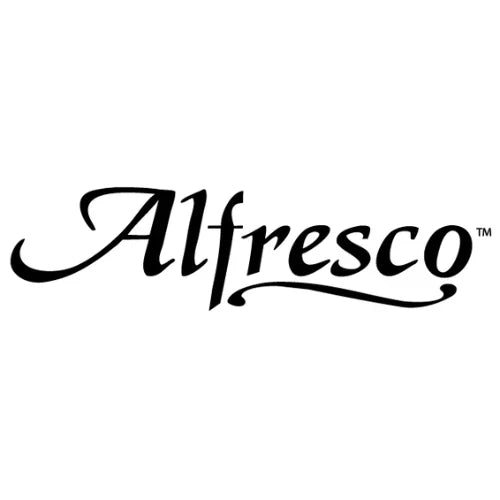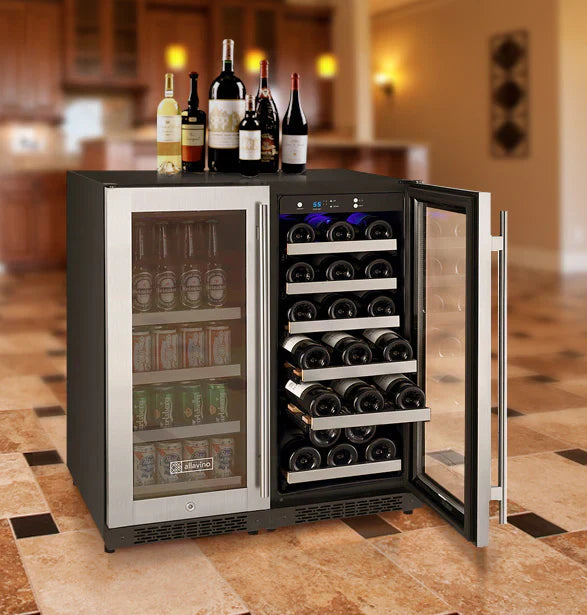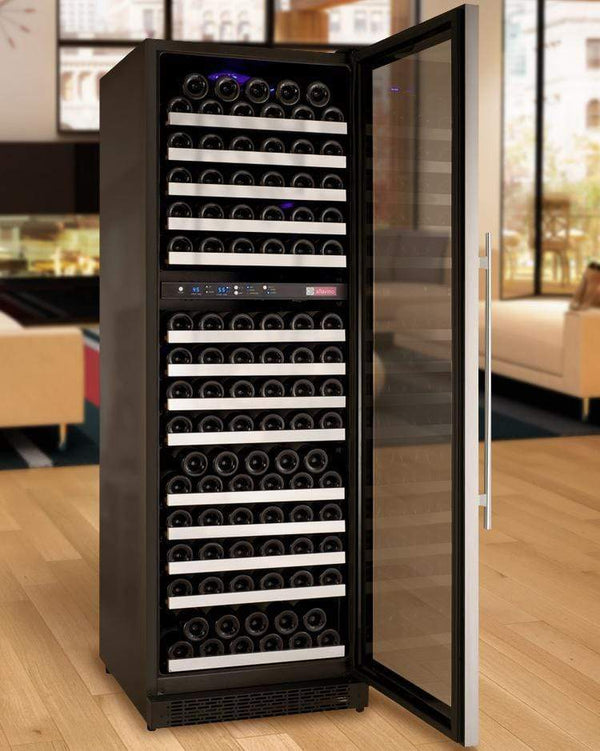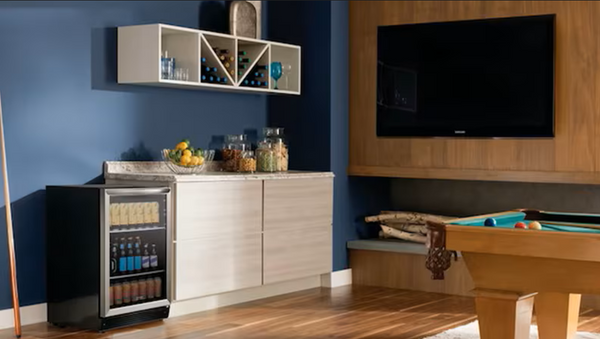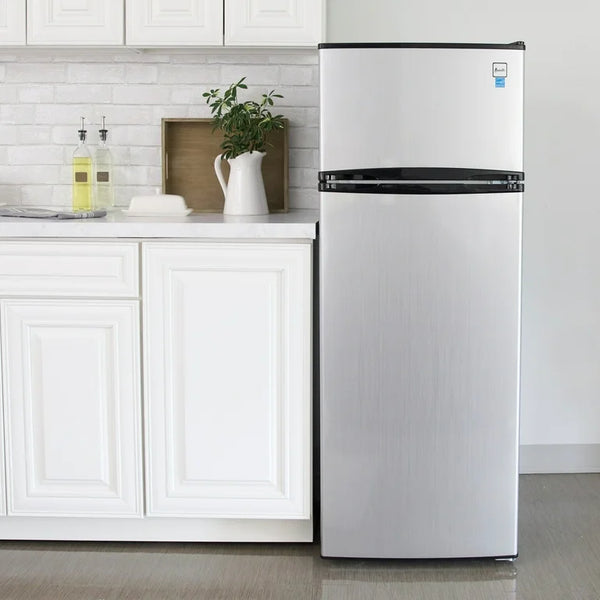Designing a Wine Cellar?
Let’s get it right.
Our specialists review your room layout, insulation, and heat load to recommend the correct cooling system for stable temperature and reliable climate control.
Self-Contained Wine Cooling Systems: The Complete Guide
By Jim Hopper, Wine Cooling Expert
Proper wine storage is essential for preserving the flavor, aroma, and value of your wine collection. Whether you’re a passionate collector or just getting started, maintaining the ideal environment—consistent temperature and humidity—is critical. That’s where self-contained wine cooling systems come in: compact, efficient, and easy to install, they’re a popular choice for modern wine cellars.
If you’re looking for a comprehensive overview of all wine cellar cooling options, check out The Ultimate Guide to Wine Cellar Cooling Systems.
What Is a Self-Contained Wine Cooling System?

A self-contained wine cooling system is an all-in-one solution designed to regulate the climate within a wine cellar. Unlike split or ducted systems, all key components—evaporator, condenser, and fans—are housed in a single unit. Most models are installed through the wall of the cellar, with the cooling side facing the wine and the exhaust side venting into an adjacent room.
Key features:
- No external ductwork or complicated refrigerant lines
- Simple installation, often requiring only a standard wall cutout and power supply
- Ideal for small to mid-sized cellars (up to 2,000 cubic feet)
- Digital thermostats, humidity control, and quiet operation available on many models
Sizing and Cooling Needs Assessment
Choosing the right size wine cooling system is essential for maintaining the ideal storage environment and ensuring long-term reliability. An undersized unit will struggle to keep temperatures stable, while an oversized system may cycle on and off too frequently, leading to excess wear and inconsistent conditions.
Step 1: Calculate Your Cellar’s Volume
First, measure the length, width, and height of your wine cellar in feet. Multiply these numbers to get the total cubic footage:
Cellar Volume (cu. ft.) = Length × Width × Height
Step 2: Consider Key Factors Affecting Cooling Needs
Cooling requirements depend on more than just size. Be sure to take into account:
- Insulation quality: Well-insulated walls (R-19 or higher) and doors help maintain stable temperatures.
- Glass surfaces: Large windows or glass doors increase heat gain.
- Ambient temperature: Cellars adjacent to hot spaces or exposed to sunlight require more cooling power.
- Door usage: Frequent opening lets warm air in, increasing the cooling load.
- Location: Basements typically stay cooler than upper floors or garages.
Step 3: Use Sizing Tools or Manufacturer Resources
Most manufacturers provide online calculators or “wizards” to help you select the right system based on your cellar’s specifics. For unusual layouts or challenging environments, consult a professional for an accurate assessment.
Step 4: Avoid Common Sizing Mistakes
- Don’t underestimate: An undersized unit may run constantly, failing to maintain set temperatures and wearing out quickly.
- Don’t oversize: An oversized system may short-cycle, leading to temperature swings and reduced humidity control.
For more detailed guidance, see our resources on wine cellar cooling unit sizing, best cooling options for large spaces, small cellar wine cooling units, and mid-size cellar cooling systems.
Key Benefits of Self-Contained Systems
Easy Installation
Self-contained units are designed for straightforward installation. Most homeowners or contractors can handle the process with basic tools, without needing special permits or HVAC expertise. This makes them especially appealing for DIY projects or quick upgrades.
Quiet Operation and Space Efficiency
These systems are engineered to minimize noise and fit seamlessly into compact spaces. Their through-the-wall or in-cabinet design keeps the cooling equipment out of sight, preserving the aesthetic of your cellar.
Energy Efficiency
Self-contained wine cooling systems are built for efficiency, using less energy than traditional HVAC systems. Many models feature smart thermostats, humidity sensors, and bottle probes to maintain precise aging conditions (typically 55°F and 60–70% humidity).
Versatility
Perfect for a range of spaces—from walk-in closets converted to wine cellars, to basement nooks and custom cellar builds—self-contained units adapt well to various layouts and capacities.
Self-Contained vs. Other Cooling Options
Wine Fridges
Wine fridges are plug-and-play appliances designed for short-term storage and serving temperatures. They’re best suited for small collections and spaces like kitchens or apartments. However, they lack the precision and capacity needed for long-term aging.
Split and Ducted Systems
Split and ducted systems separate the cooling components, allowing for remote placement of noisy parts and greater flexibility in larger or more complex cellars. However, they require professional installation, more space, and often higher upfront costs.
Self-contained systems strike a balance—offering professional-grade climate control without the complexity or expense of larger installations.
Want to explore other options? Learn more about split system wine cellar cooling units, ductless split systems, and ducted wine cellar cooling systems.
Ducted Self-Contained Systems: An Upgrade for Discreet Cooling
Some self-contained systems offer ducted options, allowing the cooling unit to be installed away from the cellar itself. With ductwork, cool air is delivered to the wine room while heat and noise are exhausted elsewhere—often outside the home. This setup is ideal for collectors who want a quiet, visually unobtrusive solution, or who need to install the unit further from the cellar due to space constraints.
Advantages of ducted self-contained systems:
- Virtually silent operation inside the cellar
- No visible equipment in the wine room
- Greater flexibility in unit placement (up to 25 ducted feet in some cases)
- Suitable for premium or design-focused installations
For a deeper dive, see our fully ducted self-contained systems guide and our roundup of the best ducted self-contained wine cellar cooling systems.
When to Choose a Self-Contained System
Self-contained wine cooling systems are ideal for:
- Residential cellars, especially in homes or condos
- Small to mid-sized cellars (generally up to 2,000 cubic feet)
- Renovations or upgrades where minimal construction is preferred
- Projects where quick, simple installation is a priority
Considerations: These units require proper ventilation. The exhaust side must vent into a well-ventilated room kept between 50°F and 80°F. Avoid venting into small, enclosed spaces or garages that can trap heat.
Top Features to Look For

- Digital Controls: For precise temperature and humidity adjustments
- Quiet Operation: Insulated housings and sound-dampening fans
- Humidity Management: Built-in sensors and controls to prevent cork drying
- Maintenance Access: Easy-to-clean filters and accessible components
- Brand Reputation & Warranty: Choose reliable brands known for quality, strong warranties, and responsive support. Systems made in the USA or by established manufacturers often meet higher standards.
Warranty Registration and Support Resources
Protect your investment by registering your self-contained wine cooling system with the manufacturer as soon as possible. Registration typically ensures you receive the full benefits of your warranty, including parts and labor coverage, and makes it easier to access support if needed.
How to Register:
- Visit the manufacturer’s website and locate the warranty registration page.
- Provide your product’s serial number, purchase date, and proof of purchase.
- Complete the registration form and save your confirmation email.
Accessing Support:
- Most brands offer dedicated support lines, online resources, and troubleshooting guides.
- Look for programs like “KoolCare” or similar, which provide extended support and maintenance services.
- For help, contact the manufacturer via phone, email, or their support portal.
Understanding Warranty Coverage and How to Maintain It
Most self-contained wine cooling systems come with warranties covering parts and labor for a set period, often 2–5 years. Coverage may vary by manufacturer, so always review the warranty terms.
Typical Coverage Includes:
- Defects in materials or workmanship
- Replacement of faulty parts
- Limited labor costs for repairs
Common Exclusions:
- Damage from improper installation or unauthorized repairs
- Failure to follow maintenance guidelines
- Environmental damage (e.g., flooding, power surges)
Best Practices:
- Always follow the recommended maintenance schedule.
- Keep your purchase receipt and warranty documents.
- Use only authorized service providers for repairs.
- Register your unit promptly to activate full coverage.
Best Self-Contained Wine Cooling Systems (2025 Picks)
While the market offers a range of options, here are some standout models to consider:
- WhisperKOOL SC PRO Series: Known for reliability, digital controls, and quiet operation
- Breezaire WKL Series: Budget-friendly, dependable, and easy to maintain
- Wine Guardian Ducted Units: For those seeking advanced humidity control and installation flexibility
Always match the model’s capacity and features to your cellar’s size and needs.
For more top picks, visit our guides to the best wine cellar cooling units, wine cabinet cooling systems, and cooling systems for glass wine cellars.
Interested in specific brands? See our reviews of WhisperKOOL wine cooling systems and why we’re the #1 trusted dealer for Breezaire & WhisperKOOL.
Installation Tips and Considerations
- Through-the-Wall vs. Built-In: Through-the-wall is most common. Built-in installations within cabinetry require careful planning for airflow.
- Venting: Always vent into a ventilated room. Leave at least 3–5 inches of clearance around the unit for proper airflow. For ducted models, follow manufacturer guidelines on duct length and diameter.
- Indoor vs. Outdoor Exposure: Some systems can be installed with outdoor venting—check manufacturer specs for weather resistance.
- DIY vs. Professional: Many units are DIY-friendly, but if your setup is complex or you’re considering ducted installation, consult a professional.
For step-by-step instructions, see our installation guide. Explore specialized setups like through-the-wall, ceiling-mounted, and wine closet cooling units.
Maintenance & Troubleshooting

Routine Maintenance:
- Clean filters monthly
- Vacuum condenser coils quarterly
- Test thermostat and inspect airflow annually
Common Issues:
- Unit not cooling: Check temperature settings and ensure vents are clear
- Unusual noise: Tighten mounting brackets and check for obstructions
- Water pooling: Clean or replace the drip tray filter
Routine Maintenance Checklist:
- Monthly: Remove and clean air filters. Replace if heavily soiled.
- Quarterly: Vacuum condenser coils to remove dust and debris.
- Annually: Inspect electrical connections and test the thermostat. Check airflow and listen for unusual noises.
- As Needed: Check for error codes or warning lights (refer to your user manual). Replace worn-out gaskets or seals.
Where to Find Help:
- Download service manuals from the manufacturer’s website.
- Order replacement parts directly from authorized dealers.
- If troubleshooting steps don’t resolve the issue, contact technical support for guidance or schedule a service visit.
For tips on keeping your cellar in perfect condition, read about ideal wine cellar temperature, wine cellar humidity, and UV lighting systems.
How to Choose the Right Model
Consider the following factors:
- Cellar size and insulation quality
- Noise tolerance and placement
- Budget
- Desired features (digital controls, humidity management, etc.)
- Installation location and venting options
- Brand reputation, warranty, and after-sales support
Before considering features or brand reputation, start with a proper sizing assessment. Refer to the “Sizing and Cooling Needs Assessment” section above to determine your cellar’s cooling requirements.
Conclusion

Self-contained wine cooling systems offer a practical, efficient, and cost-effective solution for protecting your wine collection. Their compact design, easy installation, and reliable performance make them a favorite among homeowners and collectors alike. For those seeking a quieter or more discreet setup, fully-ducted self-contained options are also available.
Want to explore more? See our full collection of self-contained wine cooling systems.
Call to Action
Ready to upgrade your wine cellar’s climate control?
Explore our curated selection of self-contained wine cooling systems or contact our team for expert advice tailored to your space.
Let us know if you’d like this guide tailored for a specific audience, optimized for SEO, or broken into shorter sections for web readability!
📚 Frequently Asked Questions (FAQs)
How important is warranty and support?
Can I install a self-contained system myself?
How long do these systems last?
Are they energy efficient?
What if my cellar is larger than 2,000 cubic feet?
What happens if I choose the wrong size cooling system?
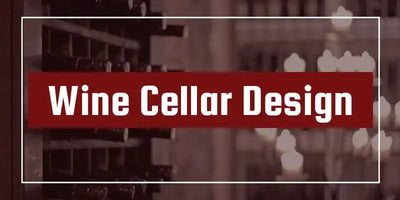
Designing or Upgrading a Wine Cellar?
We got you! Here at Wine Coolers Empire, we will guide you in building your dream wine cellar.



